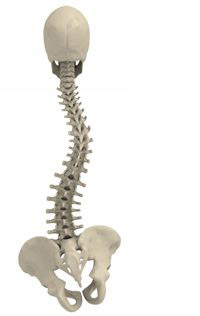 Adolescent Scoliosis is a curvature and twisting of the spine. There are many types of scoliosis, but by far the most common is found in an adolescent about to start puberty.
Adolescent Scoliosis is a curvature and twisting of the spine. There are many types of scoliosis, but by far the most common is found in an adolescent about to start puberty.
How does this happen?
Children are always growing, but during the growth spurt, they grow much faster, resulting in a twisting of the spine, followed by the curvature.
How is it found?
Many children are screened, typically in school, by leaning forward and looking for a rib bump or prominence on one side. Scoliosis is not usually associated with back pain, is not caused by school bugs, and does run in families. Once found, it can be treated!
How can this be treated?
Since very mild scoliosis is very common, most children are treated with observation: periodic X-Rays. For moderate curves in growing spines that are getting worse, bracing while the child completes the growth can stop it from getting worse. For severe curves that are found late (remember, scoliosis does not usually hurt!), surgery can not only stop the curve from getting worse, but also give substantial permanent correction.
This is the doctor you want!
Dr. Bennett is a Board Certified Orthopaedic Surgeon, also certified by the American Board of Spine surgery, a member of the Scoliosis Research Society (SRS.org), and has over 25 years of experience in the subspecialty of spine deformity as a Pediatric Orthopaedist. He leads an experienced team with the O-Arm, which allows a computer-assisted navigator in all spine deformity surgeries. Tulane was the first to acquire this technology and remains the best in it.
Learn more about the O-Arm Multi-Dimensional Surgery Imaging System here.
